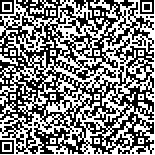下载中心
优秀审稿专家
优秀论文
相关链接
摘要

选用陆面区域温度最佳空间插值法-梯度距离平方反比法(GIDS),为近似估算云下地表温度提供了可能。实验选取暖季南京江宁地区ETM+影像和ASTER GDEMV1高程数据,探索分析GIDS估算云下地表温度的可行性和可信性。对14种空间大小云覆盖区实验研究表明:利用GIDS插值估算云下地表温度具有可行性,且估算误差随着云覆盖区范围增大而增加,其最大MAE<0.9℃,最大RMSE<1.2℃,并在云覆盖区小于100×100像元时,最大MAE<0.8℃、RMSE<1℃;插值精度与最近邻无云像元典型代表性、区域内空间复杂度和地表覆盖类型均有关,存在不稳定性和动态性;云下NDVI均方差与MAE、RMSE有着一致变化趋势,借助NDVI均方差指示云下地表空间异质性及NDVI-LST负相关性,可对插值结果进行可信性评判,以避免插值结果盲目应用,推进和提升地表温度产品应用价值。
Land surface temperature (LST) is a very important parameter controlling the energy and water balance between the atmosphere and the land surface. But when the sky is overcast, LST measurements are impossible with thermal remote sensing. Consequently, only cloudy-free measurements are useful, implying that the data set will be biased. Choosing the best spatial interpolation of land surface-the gradient plus inverse distance squared (GIDS) method, estimating LST under cloud cover is possible. An evaluation on LST estimation under cloud cover using GIDS in Jiangning study site of China Jiangsu province was tested in this paper with ETM+ and ASTER GDEMV1 data. The results showed that the GIDS can estimate LST smoothly with high accuracy. The error increased with cloud cover extent expanding, and the maximum of mean absolute error (MAE), root mean squared error (RMSE) were less than 0.9℃ and 1.2℃, respectively. When the cloud cover extent was less than 100×100 pixel, the maximum error of MAE and RMSE were lower than 0.8℃ and 1℃, respectively. The accuracy of GIDS varied with the unclouded typical pixel, complexity of spatial constructer and land cover type of cloud cover. An important parameter, the standard deviation STD of Normalized Difference Vegetation Index (NDVI) for overcast, can index the uncertainty of GIDS estimated results and have same trend with MAE and RMSE. It can detect the estimated error extent and evaluate the estimated result linking to the denotation of STD of NDVI for spatial complexity and NDVI-LST negative correlation in cloudy condition. Therefore, care should be given to the GIDS estimated result before the application.

